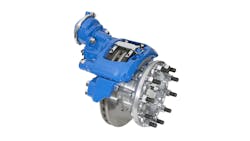What to know about replacing air disc brake calipers
Air disc brakes (ADBs) have been proven to deliver advantages on the road, in the service bay, and for a fleet’s bottom line, driving a continued increase in adoption and standard positioning across a range of vehicles and trailers. And since their stopping power makes ADBs the most logical choice for supporting advanced driver assistance technologies like collision mitigation, we’re likely to see even more air disc brakes on North America’s commercial vehicles as these safety systems become more commonplace. This installment of the Bendix Tech Tips series covers what to do if it’s time to replace an ADB caliper and how you can protect your investment in the technology.
Know the Signs of a Bad Caliper
“Regular ADB preventive maintenance includes examining and addressing issues that could lead to caliper damage and the possibility of a voided warranty,” said Mark Holley, Bendix director of marketing and customer solutions – Wheel-End. “Don’t forget to inspect guide pin movement and take a look at tappets and boots for damage and contamination, for instance, along with checking seals and bushings. The potential for caliper damage is one reason Bendix recommends replacing ADB wear components with genuine replacement parts during a pad change – pad retainer, pad retention springs, and shear adaptors – and includes them in a complete friction replacement kit.”
In the shop, technicians conducting an annual wheel-off inspection should make sure the caliper slides freely and take a moment to examine the rotor. Look at the overall condition of the rotor and evaluate the color. If the rotor is a bright rusty-red color, then it could be an indicator to inspect the caliper more closely. For further information, refer to your air disc brake manufacturer’s Service Data Sheet.
Related content: Tanker fleet boosts safety with air disc brakes and ADAS
Choose the Right Replacement
“It may seem obvious, but we can’t stress it enough: Not all calipers are the same, and the replacement you choose can have a huge impact on safety, performance, and uptime,” Holley said. “Bendix introduced air disc brakes to the North American commercial vehicle market in 2005, and there have been significant advancements in the technology over the years since. Thanks to continuous product improvements, our production ADB adjusters today are more robust than previous generations and can better maintain the proper running clearance, where some other supplier’s versions can over adjust, increasing the potential risk for dragging brakes and thermal events.”
Additionally, if you’re exploring remanufactured calipers as a replacement option, then make sure to ask about the reman process. True remanufacturing adheres to the same rigorous processes and standards used to make OEM (original equipment manufacturer) calipers. Remanufacturing also always involves replacing or repairing a core’s components to bring the part up to OEM specs. Bendix remanufactured calipers, for instance, are produced on the same line used to produce OEM calipers, using OEM processes for assembly. Other suppliers don’t have access to OEM-quality components and production processes, so you can’t truly call that a fully remanufactured part – which means you can’t be sure what components are going into it, and whether all the proper quality control steps are in place.
What to Remember in the Garage
Once you’ve made your caliper choice, consistency is key: If you’re buying one, then make sure it’s a genuine Bendix caliper (either remanufactured by the OEM or service new) with the same design so you maintain all the features of your original brake. For example, the current Bendix adjuster manages the running clearance even better than the previous version. Non-genuine calipers will not have the same adjuster as your original brake, so you would lose that benefit. Keep in mind that if you purchase an aftermarket caliper, then you will need to purchase two calipers to maintain performance across the axle, just like when a slack adjuster is replaced. Even minor differences in caliper construction and performance can cause brake pull or lead one brake to drag and overheat. For similar reasons, friction types also must match across the entire axle. In addition, because they may fit the wheel-end envelope differently, aftermarket calipers may interfere with suspension clearance, which impacts brake performance and can damage the suspension.
Other key points during new caliper installation include:
· Holding the caliper only on the exterior. To prevent injury, never insert your fingers between the caliper and carrier.
· Ensuring the newly installed caliper slides freely and can be moved by hand pressure only over the entire length of the guide pin arrangement.
· Making sure the hose routing arrangement doesn’t restrict the full travel of the caliper.
· Not overloading or damaging the adjuster. (Bendix brakes include a shear adapter that is designed to fail in the event of over-tightening, preventing damage to the mechanism itself.)
· Torquing bolts to proper spec and proper sequence.
Longer life cycles are another benefit of air disc brakes. The right part selection and maintenance practices will help you keep them operating safely and deliver lower total cost of ownership.
